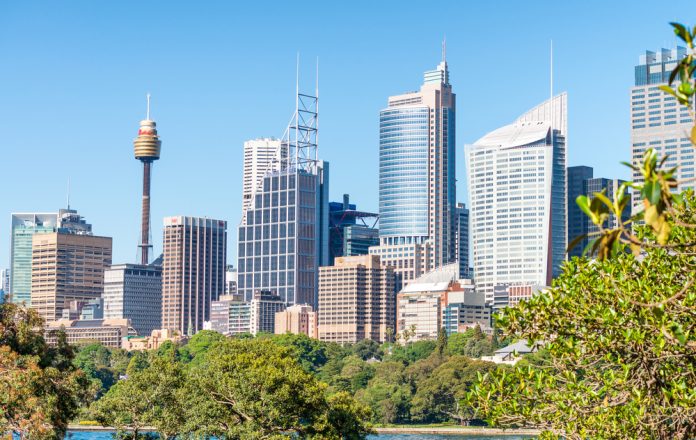As the Reserve Bank of Australia (RBA) announced a cut in the cash rate to 4.1 per cent, a collective sigh of relief was felt across the nation. Yet, amidst the initial good news, a stark reality has emerged: Australians may not see a return to pre-pandemic living standards until around 2030.
This forecast, as argued by the federal opposition and supported by economic data from the RBA, paints a sobering picture of the long road to recovery that lies ahead.
You May Like
The recent rate cut, the first since November 2020, was a ‘welcome news’ for many, signalling a potential shift in economic conditions. Prime Minister Anthony Albanese expressed optimism, noting the reduction in inflation from a high of 6 per cent to a more manageable 2 per cent.
However, the opposition has highlighted that despite this positive step, the country continues to face significant financial challenges.
Shadow Treasurer Angus Taylor has been vocal about the decline in living standards, describing it as an ‘economic catastrophe’ for Australian households.
‘Living standards have collapsed in an unprecedented way in Australia, more than at any other time in our history, and further downgrades in living standards came out in the Reserve Bank’s forecast, despite the interest rate cut,’ he said after the RBA board’s rate cut announcement.
Independent economist Saul Eslake corroborates this view, stating that real household disposable income per capita has plummeted by nearly 10 per cent from its peak, a decline without precedent since 1959.
Eslake pointed out to news.com.au that the country’s situation is ‘worse than in any comparable country’ for several reasons: a lack of substantial wage growth, a tax system that has increasingly encroached on pre-tax incomes due to bracket creep, and a high level of household debt with floating interest rates that make Australians particularly vulnerable to interest rate hikes.
The question of who is to blame for this predicament is complex. ‘The industrial relations framework, (for example), which provides the inertia in setting wages for a pretty significant chunk of the workforce. That had been put in place over, what, almost 30 years? Beginning with the Keating government, and continuing through Howard and Gillard and Abbott and his successors,’ Mr Eslake argued.
He added, ‘That’s not the fault of this government. (And) it’s not the fault of this government that our tax scales aren’t indexed.’
Moreover, global events such as the pandemic and geopolitical tensions, like Russia’s invasion of Ukraine, have had a profound impact on the economy.
The cost of housing, a perennial issue, has been exacerbated by demand-side policies and a lack of attention to supply-side solutions. Additionally, high levels of migration under successive governments have driven up house prices and rents.
Eslake agrees with the opposition’s assessment that it could take several years to recoup the losses in disposable income, saying, ‘I think Angus Taylor is broadly right.’
He also cited that the government’s spending has been a double-edged sword, contributing to inflation while simultaneously preventing a recession.
‘The irony is, both of the propositions that have been advanced by Taylor and Chalmers are true. Taylor is right, and others are right, when they say that spending by governments, plural, [have] added to aggregate demand and made the Reserve Bank’s task of bringing inflation down more difficult. That’s true,’ he continued.
‘But Chalmers is also right in saying that if governments had not spent, we might have had a recession. That government spending has helped keep us out of recession. They’re both true.’
To hasten the recovery, Eslake suggests that measures to boost productivity are key. This includes implementing recommendations from the Productivity Commission and undertaking tax reform to address fiscal drag.
However, he notes that such reforms would involve trade-offs, such as finding alternative revenue sources if tax brackets are adjusted to prevent bracket creep.
As the nation grapples with these challenges, the upcoming election may bring these issues to the forefront. Whether politicians will propose the necessary reforms remains to be seen.
We invite you to share your thoughts and experiences. How have these economic shifts affected your lifestyle and financial planning? Join the conversation below and share with the YourLifeChoices community how you’re navigating these uncertain times.
Also read: The wait is over: RBA cuts rates by 0.25%


The situation Australians are in is the result of the downward pressure put on wagers and the way money was chucked around during the pandemic.
Spending has a lot to do where the spending occurs. The LNP spending was badly used, and was responsible for the rise inflation and as the RBA has admitted they should have started raising interest rates approximately 18 month earlier.
Whereas Labor’s spending has seen the inflation rate half and the standard of living has been falling before Labor became government.
The situation Australians find themselves in all stems back to the LNP governments and as far back as the Howard government’s changes to negative gearing an capital gains. These have slowed the building of new houses and pushed up prices.
I’ve read several of saul Eastlakes articles lately and the paraphrasing does him a disservice.
Angus is only right in that it will be a long time to fix the current problems, and he should know why, he and the LNP are responsible for the mess. Finding one thing Angus was right on is not worth mentioning unless you put up all the BS. Like him claiming interest rates are still going up just after the RBA announcement of a 0.25% drop. The guys a Buffon!
While on the subject of the economy. Kogan is charging $39 for one tin of sardines. Yes it’s true.Go look up Kogan and king Oscar meditaranian sardines. They sell in stores for $7 and other online suppliers $7-$10. I was and still am stunned at their abuse of pricing.